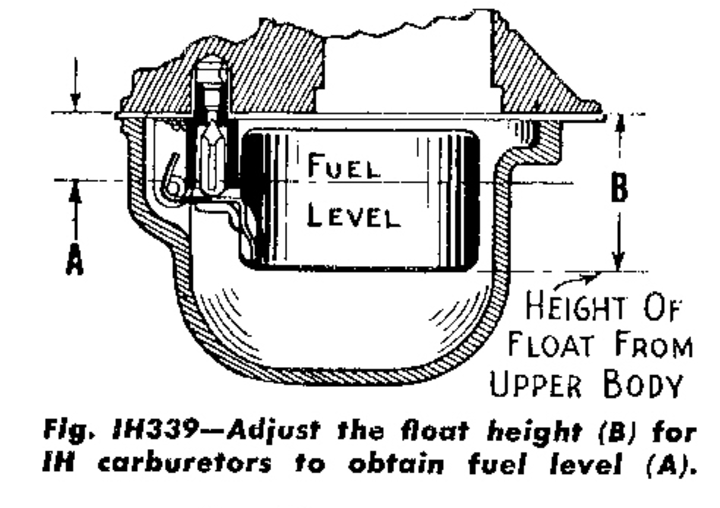My friend has a 1951 Farmall H that he has been working on for some time now. He took it all apart, cleaned it up and made it pretty (didn't do any internal work on the engine). He replaced the wiring harness on it some time ago as well while he had it apart. He had also put new plugs, points, condenser and coil on it.
He had it running some time back (several months ago), but can't get it start up now. We thought it had a carburetor problem, so we pulled it off and I took it apart to look inside. Turns out it looked pretty good and I found no real problems there. Was clean inside, and all small ports were clear, pinhole ports were clear as well. Cleaned all internals with carb cleaner.
We put the carb back on and tried to get the tractor to start, but no-go, not a hint of trying to fire up. We took each spark plug out of its cylinder one at a time to inspect, and only the #4 plug looked like it had been firing sometime in the past (dry and light brown color). Plugs 1 - 3 were carboned up really bad and looked wet. Decided to check for spark on each plug one at a time and sure enough each plug will spark. Not sure the timing of the spark is correct though. I was looking on-line and read that the 6V systms have a Positive (+) ground. Is this correct? Is the + post of the battery supposed to be connected to the frame of the tractor ??
While checking each spark plug for spark, we noticed that fuel is getting to each cylinder based on fuel odor from the open spark plug hole.
So we have fuel, air, and spark, but no hint of starting and running. Friend says he's never messed with the timing on it, so that shouldn't be the problem.....Hmm.
Engine turns over smoothly when we attempted to start it. Plug wires from distributor to cylinders appear to be in the correct locations. Firing sequence is 1-3-4-2 and wires are located accordingly.
What are you experts thinking it will take to get this gal running again?? HELP !
He had it running some time back (several months ago), but can't get it start up now. We thought it had a carburetor problem, so we pulled it off and I took it apart to look inside. Turns out it looked pretty good and I found no real problems there. Was clean inside, and all small ports were clear, pinhole ports were clear as well. Cleaned all internals with carb cleaner.
We put the carb back on and tried to get the tractor to start, but no-go, not a hint of trying to fire up. We took each spark plug out of its cylinder one at a time to inspect, and only the #4 plug looked like it had been firing sometime in the past (dry and light brown color). Plugs 1 - 3 were carboned up really bad and looked wet. Decided to check for spark on each plug one at a time and sure enough each plug will spark. Not sure the timing of the spark is correct though. I was looking on-line and read that the 6V systms have a Positive (+) ground. Is this correct? Is the + post of the battery supposed to be connected to the frame of the tractor ??
While checking each spark plug for spark, we noticed that fuel is getting to each cylinder based on fuel odor from the open spark plug hole.
So we have fuel, air, and spark, but no hint of starting and running. Friend says he's never messed with the timing on it, so that shouldn't be the problem.....Hmm.
Engine turns over smoothly when we attempted to start it. Plug wires from distributor to cylinders appear to be in the correct locations. Firing sequence is 1-3-4-2 and wires are located accordingly.
What are you experts thinking it will take to get this gal running again?? HELP !


